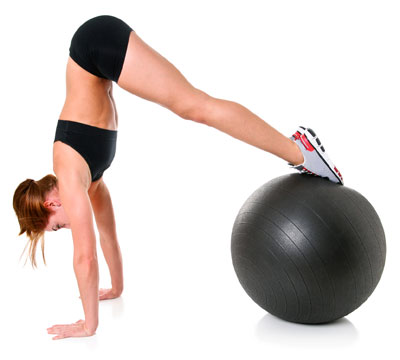- Like
- SHARE
- Digg
- Del
- Tumblr
- VKontakte
- Flattr
- Buffer
- Love This
- Save
- Odnoklassniki
- Meneame
- Blogger
- Amazon
- Yahoo Mail
- Gmail
- AOL
- Newsvine
- HackerNews
- Evernote
- MySpace
- Mail.ru
- Viadeo
- Line
- Comments
- Yummly
- SMS
- Viber
- Telegram
- JOIN
- Skype
- Facebook Messenger
- Kakao
- LiveJournal
- Yammer
- Edgar
- Fintel
- Mix
- Instapaper
- Copy Link
 Achieve Strong, Firm Abdominals and a Powerful Core with the Best Core Workout
Achieve Strong, Firm Abdominals and a Powerful Core with the Best Core Workout
Few accomplishments in life increase inner confidence and your overall sense of physical well-being like developing a strong core. The quality of your every movement will improve, you will relieve and prevent back pain and other injuries, and greatly improve your posture…the list goes on. And that’s not to mention the aesthetic benefits of achieving a trim, firm waistline complete with defined abdominals!
All of that sounds great! So how much do you really know about getting an effective core workout done? There is a LOT more to core workouts than just doing crunches. One of the number one mistakes I see around the gym is a lack of focus on the truly effective core exercises and an overfocus on crunches and crunch-type exercises.
That’s where I’m going to come in; to finally teach you everything you need to know to ditch the crunches and actually get some RESULTS. My goal is to cut through the B.S. and hype surrounding make sure you understand the complete picture from top to bottom when it comes to getting from the core situation you have to the core situation you desire! I have used these strategies with great success on dozens of clients as well as on yours truly.
Stay with me and I will tell you all about the absolute best core exercises for beginners and more advanced exercisers, tips and tricks for optimizing each exercise, instructions on how to incorporate core workouts into your overall fitness plan, nutritional guidelines for burning fat and developing core muscles, as well as cardio recommendations to accelerate your results.
 First, PLEASE READ THIS DISCLAIMER: You must recognize that no core workout, or any type of workout, can burn fat directly off the targeted body part. It’s a physiological impossibility.
First, PLEASE READ THIS DISCLAIMER: You must recognize that no core workout, or any type of workout, can burn fat directly off the targeted body part. It’s a physiological impossibility.
The persistent and patently false fitness myth of spot reduction is my worst pet peeve as a trainer. Fat loss comes about as a net result of EVERYTHING you are doing to support your fitness, especially burning calories through working your lean muscle mass and eating fewer calories than you are burning.
To boil it down, core exercises CANNOT and WILL NOT burn fat directly off your abdomen. I belabor this point because I want you stop wasting time and start getting results.
Please read the whole article to learn everything you need to know to actually see results in your core. Don’t just do the core workout and forget about everything else I will share with you.
The Crazy-Strong Best Core Workout For Women
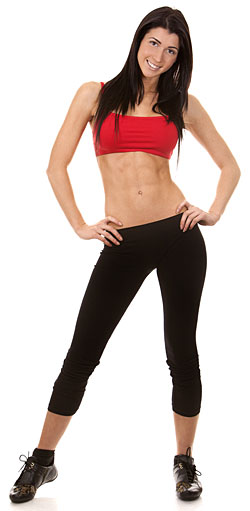 The moment you’ve been waiting for is approaching…I’m almost ready to unveil the Crazy-Strong Best Core Workout for Women! Let’s go over tips, guidelines and important warmup strategies before we dig into the moves themselves.
The moment you’ve been waiting for is approaching…I’m almost ready to unveil the Crazy-Strong Best Core Workout for Women! Let’s go over tips, guidelines and important warmup strategies before we dig into the moves themselves.
Essential Tips & Guidelines for the Best Core Workout for Women:
- Read the entire article top to bottom to ensure that you understand the whole picture. Getting a great core is more complex than just doing a core workout a few times per week.
- Make sure the movements are really coming from the core and not just the hips, chest, etc. It takes a little practice to get used to activating your core and it may feel a little difficult at first.
- Do the whole circuit a minimum of twice through and up to four times depending on your fitness level. If you’re unfamiliar with circuit-style workouts, it means doing each exercise in rapid succession with minimal rest in between exercises.
What Does it Mean to Activate the Core?
You may have heard this term thrown around in yoga class, in fitness articles, etc…perhaps you’re wondering how to actually do it, because it’s not always explained! Let me fix that right now.
Your core is a lot more than just your “6-pack” abdominal muscles. “Core” actually refers to many different muscles that stabilize and support the abdomen, torso, and hip complex. The most important muscle to make you aware of right now is the transversus abdominis, or TVA.
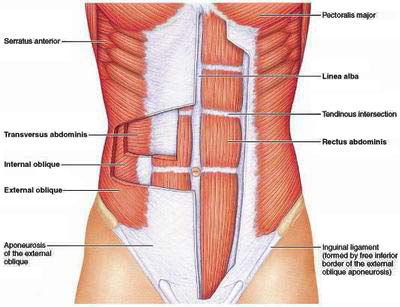
The TVA is the innermost layer of your abdominal musculature. When we say “activate the core”, we are talking about contracting that TVA to provide support to your abdomen, and by extension, lumbar spine.
So how do you do it? Practice by laying flat on your back. Place your fingers against your low belly right above your hip pointers. Pull your bellybutton toward your spine as you breathe out. This is accomplished by contracting the TVA. If you feel that area right above the hip pointers drawing inward and feeling tensed up under your fingertips, you are on the right track. If you don’t feel anything happening, regroup and try it again. Likely, you are “sucking in” your breath, which is NOT the same as drawing in and activating the TVA.
Practice until you feel that “drawing in” and that sense of firm support. Once you feel comfortable accomplishing this “drawing in” maneuver laying on your back, translate it to standing and then bring it into every single exercise you do, core or otherwise. Drawing in the TVA is especially important on the “exertion” or “hard work” part of any exercise, such as standing up from a deadlift or squat, or executing the upward motion of an overhead press.
Take the time to master this, and your body will repay you with improved posture, increased strength, and decreased injury risk.
First Things First…Let’s Get Warmed Up
 Before you begin any type of workout, it is absolutely imperative that you warm up properly in order to prevent injury and get the most out of your workout. There are three phases to an effective warmup: general cardio, corrective strategies, and active warmup.
Before you begin any type of workout, it is absolutely imperative that you warm up properly in order to prevent injury and get the most out of your workout. There are three phases to an effective warmup: general cardio, corrective strategies, and active warmup.
Step 1. General Cardio Warmup:
The first step is always a general cardio warmup of about five minutes. Take a brisk walk outside, or hop on the treadmill, ARC trainer, elliptical, or AMT at a moderate pace. Focus on working legs and arms, but especially try to feel how movement transfers through the core and get those core muscles as active as possible.
Step 2. Corrective Strategies:
This phase of the warmup will look different for every individual, but it should include foam rolling and static stretching of particularly tight tissues so that you can improve your quality of movement and exercise more safely. This is too huge a topic to discuss in detail here, but commonly tight areas to foam roll and stretch often include glutes, hamstrings, chest, and lats. If you are in doubt as to which areas are tight on you and thus requiring foam rolling and stretching, hire a certified personal trainer or see a physical therapist.
Step 3. Active Warmup:
These are movements that ease you into the type of movement patterns you will do in the workout. My favorite basic active warmup sequence to accomplish before ANY weight training session is 10 bodyweight squats, 10 lateral lunges, 10 arm circles back, 10 kettlebell halos, and 20 supine abdominal marches to activate the core. Abdominal marches require you to lay on your back with your knees up, keeping your back pressed flat to floor as you tap each heel down, alternating each time. The straighter your legs, the more advanced the stability required. Bring an awareness of the core to each and every active warmup movement, drawing belly button toward spine while maintaining natural breathing. Lift your pelvic floor (Kegels) while doing the active warmup to really wake up that deep core.
On to the Main Events!
1.) Plank
Everybody’s doing them, and for a great reason: the plank is one of the most basic and most important core exercises to include every time you work out. Talk about activating the TVA! To plank, get on your belly and then rise up, flattening your forearms against the floor and balancing on your toes. Pull your abdominals up and in and squeeze your glutes together so your hips stay level. If your butt is sticking up, you’re cheating! Start with however long of a hold gives you a good challenge and repeat that hold three times in a row, resting in between. If it’s 10 seconds til collapse, no worries. You will get stronger with time and practice. If you can plank for 1 minute while maintaining perfect form, move on to the advanced variation.
ADVANCED VARIATION: Stability Ball Prone Ab Pull In/Plank Hold
This is a crazy upgrade to the traditional plank. Start by putting your toes up on a stability ball and planking from a straight-arm, palms or fists to the floor position. If you can maintain that plank, try this: using your abs and hips, pull your knees toward your chest. The ball will roll forward with you. Feel a good crunch and then push your feet back out to the starting plank position. Do 10-15 of these ab pull ins, then finish with a plank hold to fatigue.
2.) Floor Bridge
A floor bridge is kind of like the reverse of a plank, working the posterior musculature while the plank works all the muscles toward the front. To do a floor bridge, lay on your back with knees bent and feet flat on the floor. Keep your feet, knees, and hips all aligned with each other. Push into your heels, squeeze your glutes, and tighten your core inward as you press up to a straight line from your knees down to your shoulders. Pretend you are holding a grapefruit between your knees. Maintain that grapefruit-sized space the whole time, neither letting your knees collapse inward or outward. Then return your hips back to the floor slowly. Try 15 lifts and then a 15 second static hold.
ADVANCED VARIATION: Stability Ball Hamstring Pull In/Hold
If the standard floor bridge feels to easy, level up by trying the following move. On your back, put a stability ball underneath your heels. Press into your heels, squeeze your glutes, and pull your core inward to achieve a straight body alignment from your heels down to your shoulders, which stay grounded on the floor. If you can maintain that form, try pull ins: dig your heels into the ball and use your hamstrings to pull the ball in toward your butt. Then slowly and with control, return to the straight-body starting position. Do 10-15 reps and finish with a hold in the straight-body position until you reach fatigue.
3.) Abdominal March
Exercisers of all levels can benefit from this move. It’s one of those that doesn’t feel like much for the first couple reps, then it really builds up on you and you can feel how hard your core is working! Lay on your back and put your hands palms down under your hips. Flatten your back to the floor and keep it glued down throughout the whole set. Lift up your legs and keep your knees bend. Alternating legs each time, bring one heel down to tap the floor and then contract your abs as you return the leg to the starting position. The more bent you keep your knees, the easier the movement. Keep that back flattened to the floor by pulling your bellybutton toward your spine. Shoot for 20 reps for each leg, alternating each time.
ADVANCED VARIATION: Ab March with Straight Legs and Upper Body Lift
Same basic movement, but straighten your legs all the way. If that’s still too easy, use your abs to lift your upper back off the floor, keeping your chin tucked in.
4.) Bird Dog
This two-pronged move will improve your core strength and stability from both the front and the back side of your body. Get into a tabletop position on your hands and knees. Knees are not more than hip width apart; hands not more than shoulder width apart. Contract your core inward so that your back is nice and flat. Maintain that alignment while you lift one arm and point straight ahead like a hunting dog pointing. Hold for a second, then return the hand to the starting position. Alternate arms for a total of up to 20 reps for each side. Then switch it up and work the legs and glutes by keeping your hands planted and your core tight while you lift one leg at a time straight behind you. Alternate legs for 20 reps for each side. Never let your core sag or your back arch excessively during these moves.
ADVANCED VARIATION: Opposite Leg/Arm Bird Dog
For a more intense challenge to your core, shoulders, glutes, AND balance, work the leg and arm at the same time. From that same starting tabletop position, extend the OPPOSITE leg and arm all the way straight, hold for a second, then bring your elbow and your knee together under your belly, looking down and feeling that abdominal crunch. Do up to 20 reps using that same arm and leg, then switch and do the same number of reps on the other side.
5.) Russian Twist
A great core training program needs to include an exercise that makes you twist using the oblique abdominals. Most injuries occur when twisting, so training this movement pattern goes a long way toward preventing injuries. Not to mention increasing the muscle tone and strength of your abdominals! To do a Russian Twist, sit on the floor with your knees bent in front of you and your heels on the ground. Keeping your chest high, lean back so your upper body is at an angle. Ideally, you will have a 90 degree angle in your hips and also your knees. Hold an imaginary ball in front of you with straight arms. Twist your ribcage around to one side, bringing the “ball” down toward the ground. Then alternate sides, twisting through the core to bring the “ball” to the other side. Go for 15 reps each direction.
ADVANCED VARIATION: Russian Twist with Weight
When you can control 15 reps to each side, add weight by holding a kettlebell, dumbbell, medicine ball, or weight plate. Start with 5 pounds and work your way up to as much weight as you can control while maintaining perfect form. To increase the challenge, you can also lift your heels off the ground and balance on just your hips as you twist.
6.) Side Plank Hold
The side plank is awesome for the core as well as the shoulders and hips. Don’t attempt side plank until you feel confident with the regular plank. Set up for a basic side plank by getting on your side on the ground, then placing your forearm flat on the ground, elbow directly under your shoulder. Use your core to lift your hips into alignment as you balance on the side of your stacked feet. Reach the other arm straight up to the ceiling and look straight ahead, keeping your neck aligned with the rest of your spine. Imagine you are sandwiched between two panes of glass; don’t let your butt go backward or your top arm fall forward or back. The move can be regressed by side planking from a bent knee instead of straight legs. It can be progressed by lifting the top leg so that you are balancing on only one foot. Work on holding for 10 to 15 seconds on each side, alternating sides for three rounds. As you become more advanced, work on increasing your times.
ADVANCED VARIATION: Rotating Side Plank
Once the basic side plank no longer presents an intense challenge, try this killer upgrade. From the basic side plank position with straight legs and free arm pointing to the ceiling, swoop the free arm down to tuck under the space between the floor and your body, rotating through the obliques. Then sweep it back up to point at the ceiling. Use extra care to keep the supporting shoulder strong. With the dynamic twisting movement, it’s easy to lose track of what the shoulder is doing. Don’t let it collapse. Go for 10-15 of these rotations.
How to Incorporate Core Workouts into Your Total Fitness Plan
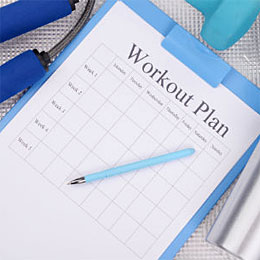 So now you know my absolute favorite movements for stabilizing and strengthening the core muscles. Remember to do the whole circuit 2-3 times through during each session for the best results. So how much often should you do the routine in terms of sessions per week, when should you do it, and how should you work it in with your other strength training and cardio workouts?
So now you know my absolute favorite movements for stabilizing and strengthening the core muscles. Remember to do the whole circuit 2-3 times through during each session for the best results. So how much often should you do the routine in terms of sessions per week, when should you do it, and how should you work it in with your other strength training and cardio workouts?
Core training is a little different than working other muscle groups. You can work the core more often than say, legs, chest, or back, all of which need a day off in between sessions. Most people can work core up to six days a week, though you probably don’t need to do THAT much core to make good progress.
I would recommend doing your variation of the core workout from this article three to four times weekly to get great results without overdoing it. The days you should do it will depend on how the rest of your total fitness program is structured. Do you do three full body strength workouts per week? Then do the full core workout on those days and slip an extra day of core into your week at your convenience. Do you have a weight training split set up where you are doing legs one day and upper body on other days? Then do the full core workout on upper body day. In my experience, I find that when I’m working on a split, leg day is so damn demanding that I just don’t have the extra energy to spare for a full-on core workout in addition!
Just be wise and listen to your body. If you feel tired and fatigued in the core, do less frequent sessions until you get stronger. If you feel strong and have a ton of energy in the core after following my recommendations, try adding an extra day and/or more advanced variations of the exercises.
How Does Core Training Relate to BELLY FAT LOSS?
 As I mentioned not too subtly in the introduction, core workouts WILL NOT and CANNOT burn fat directly off the abdomen. A lot of people erroneously believe belly fat loss to be the main purpose of core exercises. Sadly, fat loss doesn’t work that way (although our lives would be a lot easier if it did).
As I mentioned not too subtly in the introduction, core workouts WILL NOT and CANNOT burn fat directly off the abdomen. A lot of people erroneously believe belly fat loss to be the main purpose of core exercises. Sadly, fat loss doesn’t work that way (although our lives would be a lot easier if it did).
Just to make sure we get it straight, let’s do a little primer on the physiology of fat loss. When you burn fat, your body will draw from fat stores all over the body, not from over top of the area being worked. Muscle and fat are two distinctly different types of tissue and working muscles in a certain area contributes to overall calories burned and fat burned, but not to fat loss directly in that area. Fat loss is a net result of all your fitness and health activities taken as a whole. In a nutshell, think of fat loss as calories in versus calories out. To experience a net loss of body fat, you need to eat fewer calories than you burn through exercise and daily metabolic processes.
Muscle cells are our body’s lean mean calorie burning machines. The more lean muscle you build, the more calories you burn even while resting, and body fat is easier to lose and easier to keep off. Core workouts are a major part of a smart muscle building program because they build core muscles and also support your whole body so you can get stronger and better able to lift more weight and do more intense cardio.
So now you can see that core workouts are an essential part of a fat burning fitness program, but if you want to see results, they cannot be your main staple. You need to focus on the right balance of strength training (including but not limited to core), cardio training, and smart nutrition choices.
Cardio Recommendations for Getting Absolutely Amazing Abs
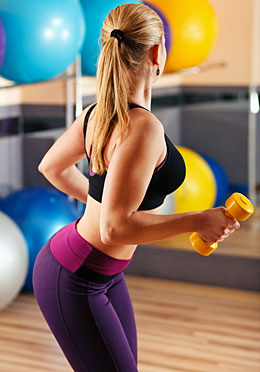 With all my talk about core workouts NOT burning belly fat, you’re probably wondering how to burn that stubborn stuff! We’ve already gone into about the importance of focusing on full body strength training in order to get that lean mean muscle tissue fired up, so let’s now discuss how cardio fits into the picture.
With all my talk about core workouts NOT burning belly fat, you’re probably wondering how to burn that stubborn stuff! We’ve already gone into about the importance of focusing on full body strength training in order to get that lean mean muscle tissue fired up, so let’s now discuss how cardio fits into the picture.
Strength training should be the base of your workout plan, but cardio needs to be blended in in smart ways, neither overdone nor underdone. For general health, adults need 90 minutes of cardio per week (that would be, for example, three 30 minute sessions). For fat loss, you will want to crank up the cardio in terms of both time and intensity.
Straight talk on abs: if you want to reveal the strong abs you have been building underneath the stubborn layer of body fat, you have to burn off that layer with some good old fashioned hard work. To efficiently burn body fat, aim for at least 120 minutes of vigorous cardio per week. 150 minutes is even better. And when I say vigorous, I mean don’t mess around. You need to take it seriously and really get after it. Walking on the treadmill without breaking a sweat, feeling like you could go for hours that way…doesn’t count! I want you sweating and elevating your heart and breathing rate. This will require a different amount of intensity for each individual since we are all coming from different starting points. Don’t look at what the next person is doing; challenge YOURSELF.
Adding interval training is a good choice when it comes to burning body fat. In interval training, you spike your heart rate for a short period of time and then take it back down to allow yourself to recover. Then you spike it again and recover again, repeating for your desired time. If you’re new to intervals, cardio machines at the gym have built-in interval programs that remove a lot of the guesswork. If you’re not a cardio machine person and prefer to exercise outdoors, try sprinting for 20 seconds, recovering for 10, and repeating that way for several rounds until you are good and spent.
Remember to be gradual and progressive with your cardio, just like any other type of exercise. Your safety is the most important thing. If you injure yourself, you won’t be able to train at all, so take it easy until you know what you are realistically capable of at this point in time. You WILL get stronger, more fit, and MORE LEAN with time and hard work!
Absolutely Amazing Abs Best Core Workout For Women: The Bottom Line
Thank you for sticking with me ‘til the end! Now you know everything you need to know to really get the results you are after: a firm, toned, and strong core…increased abdominal definition…drastically improved posture…follow the workout and my guidelines and I guarantee with time you will get where you want to be. Did I leave out any of your favorite core exercises? Have any core training tips I forgot to mention? We love to hear back from our readers so talk to us in the comments below!
About Mae Barraclough
Mae Barraclough, B.S., NASM-CPT, NASM-CES is a certified personal trainer, corrective exercise specialist, and licensed Zumba Instructor. With her passion for health, fitness, and dance, Mae loves learning all she can and sharing her knowledge with others.

